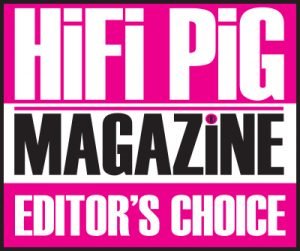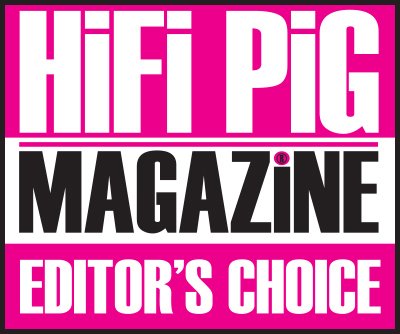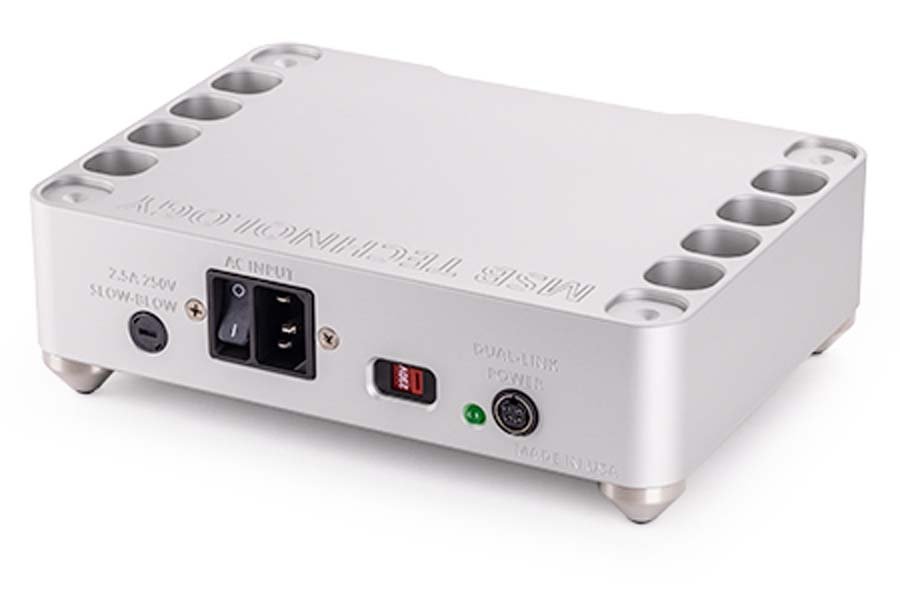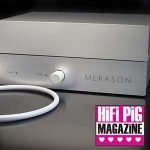MSB DISCRETE DAC REVIEW
The MSB Discrete DAC is an American made Digital to Analogue Converter costing €11,000 plus an extra €1650 for the second external power supply. This puts it up against some serious competition! How does it compare? Stuart Smith finds out.
MSB are an American brand headed up by the brothers Jonathan and Daniel Gullman and located in Silicon Valley, California where they design and build a range of amplifiers, transports, and DACs. It’s an interesting setup with everything from design through to milling the chassis to building the circuit boards being done in-house. This is a company that is “All American” and fiercely proud of that fact. For example, the chassis for the products are made from “North American-sourced” metals, and then that is machined using Haas CNC machines that are built in California. If you take a look at their website you will see that the machining shop is a fully equipped facility designed to meet the needs of a company producing high-quality cases in which the electronics will be fitted – no off the shelf or cheap bent metal cases here!
This all-American theme is continued in the company’s PCB Shop where they use circuit boards produced for them in Silicon Valley, which are then made ready for the automated adding of the smaller components and hand-fitting bulkier components before washing and inspection.
Once populated, the circuit boards are made into modules and then placed inside the casework. Once complete there are measurements and functional tests before the final products are inspected, cleaned, and packed up ready to be shipped, but not before a “white glove inspection” by either Jonathan or Daniel.
I like all this attention to detail and the MSB website suggests a company that is massively proud of its American heritage and of the products they make.
The Discrete DAC we have here is the baby of the four DACs MSB produces, with the top-of-the-range Select DAC boldly proclaiming to be “the world’s finest DAC”. The Discrete is around €11,000 whilst the Select is €120,750 with its power base. Yes, you read that right, the Select DAC is the best part of €121,000!
MSB DISCRETE DAC DESIGN AND BUILD
Like the rest of the DACs in the MSB range, the Select DAC is modular in its architecture with each of the modules being produced in house, as outlined above. I’ll go through the modules included in the Discrete DAC and explain a little about each.
Needless to say given everything talked about so far, the Prime DAC modules are made in-house and they have been making and designing discrete ladder DACs since 1999.
This is how MSB describe these modules: “It’s best to think of our DAC modules as a black box: the modules take the raw digital data in and output a continuous voltage. They’re not limited by audio formats, sample rates, or even speed. We can operate our current DAC modules at up to 6 MHz for PCM and up to 50 MHz for DSD. This gives us lots of headroom for future sample rates and audio formats.”
The AC modules are fully balanced at every stage, have no buffers, IV converters, or transistors in the signal path, and have no active devices used in the conversion process at all. The DAC has two modes; multi-bit PCM and single-bit discrete DSD mode. The DACs are individually shielded and thermally-bonded and multiple units are used per channel, which MSB tells us increases performance and lowers output impedance. Regular readers will appreciate all that is taken from the MSB website and I make no apologies for not really understanding the electronics. The Discrete DAC uses two of these modules per unit.
The next module is the display which is a cool and easy-to-read LED that is “slaved” to the audio clock. I actually like the simplicity of this and it is very intuitive to use when you get into setting up and menu diving, though diving is over-egging it a bit as the Discrete is a doddle to set up…if you do it right, but more on that in a while.
Then we have the Integrated Clock module and I’m starting to “get” the whole modular approach to the design of the MSB DAC. It’s a clever thing meaning that their products are repairable and upgradeable – for example, you can have a card that is set up for single-ended outputs or balanced XLR outputs (for review we have the balanced version). The clock can be seen as being the heart of the DAC and once again the clocks are made in-house. Each clock is made up of two independent clocks but only one is used at any given time so as not to add unwanted noise to the circuit. Once you start playing a tune the DAC works out the sample rate and chooses the correct playback clock. The reasoning behind the two clocks dealing with different “frequency families” is that music is mostly recorded within multiples of the 44.1kHz family or the 48kHz family and having a clock dealing with each family minimises loss. I’ll not get into the whole detail of this here but the MSB website does have an excellent (and interesting) explanation of jitter and why having a very low jitter clock is favourable to having a very accurate clock – there’s a link at the bottom of this review.
The output modules are where the converted digital signals are output to analogue signals that our amplifiers can make use of and MSB make two flavours of the output module. The Base module is used on the two lower DACs (including this one) and then the Preamp Output Stage for the top two DACs in the range. The Base module has two outputs (high and low) depending on whether you are outputting to a preamplifier or directly to a power amplifier. I’m outputting directly to the LAB12 (and later a Krell KST100) power amp and so a digital volume algorithm is used where the digital volume control is left at a relatively high output so as not to encounter loss at lower volume levels. This is disabled if you are outputting to a preamplifier.
The USB module is completely electrically isolated and is again a standalone module capable of 32 bit#768kHz, MQA decoding and 8X DSD. For the most part, I used this input and for a quick comparison one of the optical inputs.
So, essentially, around the back of this DAC we have XLR output modules, dual power inputs (more on this in a moment) the digital input module (XLR, RCA, and two optical), and the USB input.
The more observant of you will have read this and noticed that there is no mains inlet. However, there are two inputs for external PSUs and a little doodad/adapter that allows the use of one external PSU. This unit came with two power supplies and I’ll be playing with the DAC with one and with two to compare and contrast. And this is where I had a problem with this DAC, though mostly the problem was of my own making. I wired it all up and the unit lit up but I could get no sound out of it whatsoever. None, despite working back as I always do if there’s an issue! I called the distributor and we went through everything again. Nothing was amiss. “Look”, says I “ there’s obviously a fault with this unit as it’s lighting up, I can see it on the network and I can send tunes to it via the Stack streamer and Roon!” We went through everything and I was getting ready to pack it up and send it back when I reached around the back of one of the PSUs and switched it on – MUSIC!!! Now, this is an important and quite a cool lesson in what is going on with the two PSUs. So I saw the DAC lighting up and it looked fully functional, right down displaying the bit rate etc of the file playing, but no music. This is because one PSU is supplying juice to modules including the screen and USB input etc but not to the output module. Ok, I looked a prat but it proves that the separate PSUs are actually doing something rather than being there for show, though they do look rather cool in themselves.
Talking of cool let’s talk about this remote. Like the rest of the main body of the DAC and the PSUs, the remote is hewn from a block of aluminium. It’s weighty, it feels perfect, it’s not overly ostentatious and it’s perfect! Did I mention the remote is perfect?
So that’s it and I think the only thing I think I’ve left out of the build part of this DAC is the 3 buttons and the knob on the front panel which are used for manually changing the volume and menu diving, though all this can be done from the remote.
All in all the Discrete DAC is beautiful looking, minimal, easy to set up (it’s all but plug and play if you turn both the PSU’s on) and it feels like a proper bit of audio engineering. The demo model came in brushed aluminium but you can also get black. The PSUs are available to match.
MSB DISCRETE DAC SOUND QUALITY
The Merriam-Webster online dictionary tells me that the definition of high-fidelity (HiFi) is “the reproduction of an effect (such as sound or an image) that is very faithful to the original” and it would seem to be reasonable to assume that this is the goal of audiophiles around the world. However, I’d argue that there is sort of two trains of thought on this subject; one where there’s absolute fidelity to the source material at all costs, and another that sounds great though to the listener but perhaps not absolutely true to the original source – and I don’t think it’s unfair to say that both these positions have their place in the world of playing tunes at home. For some folk, a highly resolving and accurate system may well be described as being over-analytical, and on the other side of the audio fence, some will suggest that some systems sound nice but flawed. Personally, I think that both these standpoints have their merits and it’s going to be a case of you paying your money and you taking your choice. However, there are also products that manage to straddle both sides of the electric fence (whilst being careful not to electrocute their nether regions) and give us a tremendously enjoyable reproduction of a recording whilst remaining true to the source material. We have what I consider to be a pretty resolving system, but we also listen to music a fair old bit for pure pleasure and so there’s a valve amp currently feeding our chosen reference loudspeakers – though that’s not to say this system isn’t highly resolving in its own right. I suppose that the vast majority of people who listen for pleasure at home are looking for a balance between the two, and whilst I still maintain we are most likely to hear the biggest effect in a system by changing transducers, every element in the chain of sound will affect the final sound and, in a digital system, I think the DAC you choose can have a huge effect on the final sound.
Anyway, the MSB Discrete is a machine that I consider to be highly resolving and a true HiFi product with regard to the definition I quoted above. However, it’s also very nice to listen to in this system, though I would say it is more accurate/true to the original DAC than our LAB12 DAC or perhaps our Lampizator BIG 7.
I’m getting a bit away from the review proper, but I’m sure you can see why I have added that little diversion.
With the MSB there has been a great deal of attention paid to ensuring the signal stays as pure as possible and is not affected by other parts of the DAC or outside sources; modular construction, dual power supplies, isolation of USB etc. and this is borne out in the sound that this DAC brings to the party.
For the most part, I listened to the MSB through our LAB12 and Krell KST100 amps and TotalDAC D100 speakers. The only other items in the chain were the Stack streamer and a pretty well-sorted network setup.
Even at very low listening levels, it was clear that the MSB was delivering a “clean” analogue output to the amp…and I’m aware that sounds a bit vague. There seemed to be a little more separation of instruments in the mix of whatever I was listening to than with the LAB12 DAC and Pre in the signal path and a slightly leaner edge to the music – more clearly etched, perhaps?
This leaner and cleaner edge has the effect of adding a level of perceived detail to the listening experience. It’s not bombarding you with information, but it is a notably more defined sound with regards to the spatial information and the way that elements sit in the mix – a tad more solidity and more of a sense of the stereo image being wider and deeper and with instruments and sounds occupying a definite space of their own. This effect was evident on track after track but didn’t feel like it was overly exaggerated. This kind of sound really appeals to me and was really excellent to experience on lots of tunes, but was especially evident on tracks from Rumours with every part of the mix being identifiable as unique. Jon Hopkins’ Music For Psychedelic Therapy was a beautifully enveloping experience, made all the more so as sounds come and go in the soundstage in a somewhat more solid way than without the usual DAC. This very pleasant sound I was experiencing, it could be argued, was to a large degree down to the choice of amplifier and what that added to the mix, and I do think this is a valid argument. However, to get this level of separation and detail within the soundscape the DAC is clearly having a very important role to play. Anyway, I switched out the valve power amplifier and put in its place the Krell KST100 (all fully fettled and brought up to a “better than new” spec by Krell in the States) with my intention being to see what effect was the DAC and what was down to the amp – basically isolating the effect to a component.
Playing Gil Scott-Heron and Brian Jackson’s Your Daddy Loves You from the Winter in America album gave me the same impression of a reach-out-and-touch soundscape with incredibly well-defined positions in the mix and a whole load of detail – the over-driven sound of the electric piano at around a minute forty really stood out as being faithful to the recording; a case of high-fidelity highlighting a low-fidelity artefact? And this level of detail the MSB Discrete brings to the listening experience was carried through everything I listened to…and I listened to this DAC a lot, with it being the only thing I used to for a solid two weeks.
One of the things I jotted down in my notes during this time was the “sense of scale” the Discrete brought to the music I was listening to – big music sounded BIG and more intimate recordings had their own scale too. I suppose what I’m saying (badly) is that the Discrete was true to the file it was being fed and I did enjoy hearing it allowed me to pull small details out of the mix – Jazz at the Pawn Shop (DSD128) felt more lifelike and in the room than I am used to and raw tracks such as Phuture’s Acid Trax did sound rougher and really basically recorded. This latter track is a good track for me to play when listening to new kit as it is basically a drum machine and an acid box and this latter did sound just like a 303 there in the room.
Moving away from the actual sound of the music, one of my main takeaways from listening to the Discrete was the sense of timing it brought to music. This is a very odd one to describe but came to the fore on tracks like Pan Eros from World Of Drums and Percussion. There’s just a sense that with the MSB in the line that everything is timed correctly and rock solid. As I said, it’s an odd one to describe but you do hear it as it brings a sense of rightness to rhythm tracks. Perhaps that’s a bit of an odd example for me to use as it’s a bit “World Music” but you are also made aware of the rightness of timing on percussive techno tracks.
The MSB Discrete, as I mentioned, came with two power supplies but you can operate it with just one with the supplied doodad. I did try with just the one power supply and the Discrete remained a very strong performer with the differences being a very slight loss in the sense of separation and definition when listening intently. Would I pay extra for the second supply? Yes, definitely, as it is those extra tiny little bits of detail that adds the cherry on top of an already rather splendid slice of musical cake brought out on tracks like the audio show mainstay Keith Don’t Go from Acoustic Live by Nils Lofgren. This latter recording gets played to death at shows, but that doesn’t detract from it being a very good tune and a very good recording, though I have been known to take the piss a bit when it gets played for the tenth time in a day at audio events. Anyway, the little bit of extra detail on the strings, the attack, and decay are all there to be heard and it’s a marvelous thing to listen to. And this is what separates the very good from the excellent piece of audio equipment. As I listen to this tune a few times it strikes me that the Discrete is just that (discrete), it doesn’t seem to add a great deal of itself to the file it is playing. I’m sure it does have a flavour of its own, but from my standpoint, it sounds like a very neutral and transparent DAC.
CONCLUSION
I have enjoyed my time with the MSB Discrete DAC a great deal. It is an unassuming but very nicely put together component that has had a great deal of thought put into the architecture of the parts that make it up. The modular nature of the Discrete and other MSB DACs is very clever and I assume this goes a good way towards giving it such a neutral and detailed sound, where no one part is interfering with what the other is doing.
Sonically, it is akin to the old “straight wire with gain” only in the digital realm. It seems to take in zeros and ones and then somehow make sense of these and just convert them into faithful reproductions of the recording – though me not being at the recording of any of the records I listened to, that’s my assumption coming into play.
This DAC is €11,000 and as such, it is a considerable investment to make, but I would suggest that this is not stupid money for the kind of transparency and clarity it brings. At this kind of price, it puts Chord DAVE as being direct competition and I said that DAVE was the best DAC I’d heard back in 2018. However, the extra PSU does add to the cost considerably! MSB’s top-level DAC is €121K and there are other brands out there offering very expensive options, but the truth is that the vast majority of people will never feel the need to spend that kind of money (even if they could) to eek out that last-minute bit of detail. Never say never, but I reckon 99.9% of folk would get to the Discrete’s level of performance and not be able to justify another €110K to achieve, what I am guessing would be marginal gains – though I have not experienced the Select and so cannot say for sure that this would be the case and it may be a total revelation is sonic engineering.
What is available on models higher up the MSB food chain is the ability to add an analogue module so that you can use the unit as a true preamplifier and DAC. As it stands, the Discrete offers a very good solution should you be a music lover that plays only digital files and you can go straight into a power amp. If you have a turntable, for instance, the Discrete will have to act as a standalone DAC and go into a preamplifier/integrated amplifier which will then add its own flavour to the mix.
There is the option to add a streaming module to the Discrete and if I was in the market for a digital streaming solution, then this is where I would be going.
Whatever, the Discrete is a superb bit of kit that I’d really love to take up residence in the system on a permanent basis, but that’s not going to happen. Is it better than the Chord DAVE that I raved about a few years ago? I don’t know as that was years ago and I don’t have one here to test against. What I do know is that the MSB brings an excellent level of performance by way of neutrality to a system that allows other parts of the system to do their thing – it’s sort of the digital equivalent of a very (very) good cartridge.
II cannot do anything but award this DAC our highest award, but that award goes with the caveats that it should be used directly into an amplifier and that I’d like to have had the options for analogue inputs.
AT A GLANCE
Build Quality:
Unassuming but very solidly put together
The modular nature of MSB products allows you to have the bits you want and leave out those you don’t
The remote is brilliant
The display is a bit basic but it does what it needs to and you can see it from the other side of the room
Sound Quality:
Detail and transparency are the main features
Allows a real insight into the makeup of a track
Brings a sense of timing being bang on the money
Detail isn’t a result of the higher frequencies being artificially pushed
Both PSUs are not absolutely necessary but once you remove one you want to put the other back in
Value For Money:
You could spend less and get close to the sound of this DAC, for sure. Conversely, you could spend a lot more and not gain a great deal in real terms.
We Loved:
There is a real sense of spectacle and scale when the MSB is in the system. There is scale on bigger productions and intimacy on smaller-scale recordings and pieces
It won’t make a pig’s ear into a sow’s purse, but it’s majestic on really good recordings
It’s very detailed but not harshly so – actually, it’s a very easy component to fit in a system and live with
Best remote we’ve had here in a while
We Didn’t Love So Much:
It’s not cheap and you will want both PSUs once you compare with just one
Crap recordings are laid bare
No analogue inputs to make it the heart of a full system
You know that MSB have stuff that is out of reach financially and potentially better
No headphone output
Price: €11,000 plus €1,650 for a second power supply
Elevator Pitch Review: Built in America, the MSB Discrete is a “modular” DAC that also acts as a preamplfier, though, as supplied, it has no analogue inputs. Sonically it is very much as its name suggests and converts files faithfully and without loss or (importantly) embellishment. The sonic signature is detailed and yet easy to listen to, with the Discrete bringing a sense of the recording’s scale (big or small) to the listening experience. It has the option for two PSUs and once you hear with both it becomes a necessity to have both.
SUPPLIED BY VERY FINE SOLUTIONS
Stuart Smith
Technical Specifications
Supported Formats (Depending on Input)
44.1 kHz to 3.072kHz PCM up to 32 bits
1xDSD, 2xDSD, 4xDSD, 8xDSD
Accepts DSD via DoP on all inputs
Digital Inputs
1x RCA Coaxial
1x XLR
1x Word-Sync Out
2x Toslink
2x Isolated slots for optional modules
XLR Outputs
Voltage: 3.57 Vrms Maximum
Impedance 300Ω – High Gain setting
Impedance 150Ω – Low Gain setting
RCA outputs with the optional output module
Voltage: 3.57 Vrms Maximum
Impedance > 600Ω – High Gain setting. Never use!!
Impedance 100Ω – Low Gain setting. Always use!!
Analogue Volume Control
1dB from 0 to 106
Deactivable by menu
Dimensions Chassis Width : 432 mm Depth: 305 mm Height without feet: 51 mm. Height with feet: 68 mm
Weight: 8.2 kg
Accessories included:
Manual
Remote control Aluminum MSB
USB charging cable
4 X Spikes and Cups
4 X plastic inserts
Power connector splitter
Discrete power supply
























































































































































































